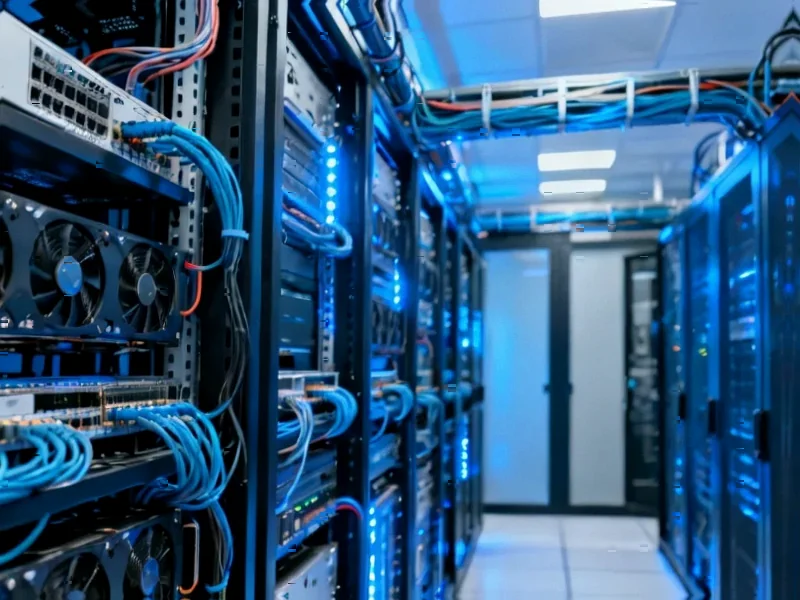According to CNBC, traders betting against the S&P 500 in October faced significant losses as the index gained 2.3% despite historical “Octoberphobia” fears stemming from the 1929 crash and 1987 crash. The tech-heavy Nasdaq Composite performed even better with a 4.7% monthly gain, driven largely by AI-related stocks. Amazon surged 9.6% on Friday alone after CEO Andy Jassy highlighted strong AI demand in cloud computing, lifting other AI stocks including Palantir and Oracle. Nvidia became the first company to reach a $5 trillion valuation in October, with CEO Jensen Huang describing the technology as creating a “virtuous cycle” of usage growth driving investment, which in turn improves AI capabilities. This momentum appears fundamentally different from temporary market spikes, resembling sustained energy rather than a sugar rush.
The Virtuous Cycle Reality Check
What makes this AI investment wave particularly compelling is the self-reinforcing nature Huang describes. Unlike previous tech bubbles where speculation outpaced practical applications, we’re seeing genuine enterprise adoption driving infrastructure spending, which then enables more sophisticated AI capabilities. The capital expenditure announcements from Big Tech aren’t speculative bets—they’re responses to actual customer demand for AI services. This creates a flywheel effect where improved AI tools generate more use cases, which in turn justifies further investment. However, the critical question remains whether this cycle can maintain its momentum when enterprise budgets tighten or if AI productivity gains fail to materialize as expected.
Winners Beyond the Usual Suspects
While Nvidia and cloud providers capture headlines, the real beneficiaries extend throughout the technology ecosystem. Semiconductor equipment manufacturers, data center real estate investment trusts, and specialized cooling solution providers are experiencing unprecedented demand. More importantly, we’re seeing second-order effects where companies leveraging AI to solve specific industry problems—from drug discovery to supply chain optimization—are attracting significant venture capital. The market is beginning to differentiate between infrastructure providers (the picks and shovels) and application companies (the gold miners), with both categories showing strong growth potential but facing different risk profiles.
The Capital-Intensive Reality
The massive capital expenditure commitments highlight a crucial aspect of this AI boom: the incredible infrastructure requirements. Training sophisticated models requires not just expensive GPUs but enormous energy resources, specialized data centers, and scarce technical talent. This creates significant barriers to entry that favor established players with deep pockets. While this concentration of power among Big Tech concerns regulators and startups alike, it also suggests the current investment cycle has more substance than the dot-com era when anyone with a website could attract funding. The capital intensity acts as a natural filter against purely speculative ventures.
Sustainability Concerns and Catalysts
The biggest risk to this virtuous cycle isn’t necessarily overvaluation but rather execution challenges at scale. Deploying billions in AI infrastructure requires perfect timing—building capacity ahead of demand without overshooting. We’ve seen this movie before with cloud computing, where early massive investments eventually paid off but created painful periods of underutilization. The current AI infrastructure race could face similar growing pains if enterprise adoption timelines don’t match the aggressive build-out schedules. However, unlike previous technology cycles, the potential productivity gains across multiple industries provide a broader base of demand that could absorb this capacity more quickly than skeptics anticipate.
Market Implications Going Forward
For investors, the key distinction will be between companies building durable AI advantages versus those riding the hype cycle. The infrastructure providers appear to have the most predictable near-term revenue streams, while application companies face greater execution risk but potentially higher rewards. What’s particularly noteworthy is how this AI investment wave is transforming traditional market seasonality, with technology stocks now acting as defensive plays during uncertain periods rather than speculative gambles. This represents a fundamental shift in how markets perceive tech companies—from growth stories to essential infrastructure providers.




